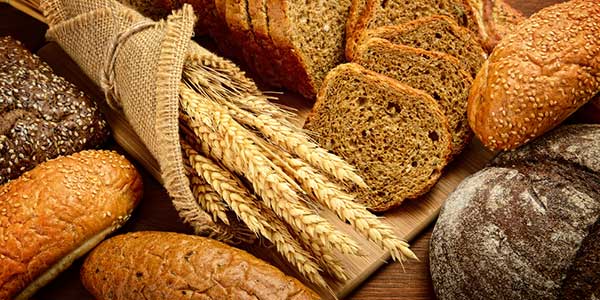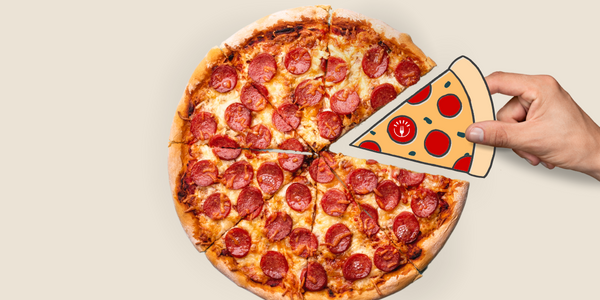
Carbohydrates in Bread
The amount of carbs in bread is mostly dependent on the flour that produces it. Whole grains are as the name suggests, containing the whole portion of the grain, thus supplying fiber, B vitamins, iron, and other valuable nutrients. On the other hand, refined carbs are essentially grains stripped down and processed, ultimately losing the beneficial nutrients whole grains are notorious for. So when it comes to bread, nutritional content mostly varies based on the type of flour that produces them, such as refined carbs from white flour and complex carbs from whole grain flours, including wheat and rye. Below identifies carbohydrates in bread along with their fiber content, which are all valued based on one slice or an average of 30 grams.
White Bread
Being produced from white flour, or wheat flour without the bran and germ layers, white bread bares a light color and minimal fiber and nutrient content.
15 grams of carb, less than 1 gram of fiber
Wheat Bread
As mentioned, whole wheat flour offers nutrients that its refined and processed counterpart lacks. Despite the marginal disparity between the white and wheat bread carb and fiber content, iron, folate, and other valuable vitamins and minerals inhabit wheat products.
14 grams of carb, 2 grams of fiber
Multigrain Bread
Multigrain is considered a heartier bread and mostly contain whole grains and seeds that are visual to the eye. They also tend to supply a greater supply of protein compared to other breads.
18 grams of carb, 4 grams of fiber
Rye Bread
Produced from various proportions of flour from the rye grain, rye bread can be light or dark in color, or even a combo of both as witnessed in marble rye. It is often denser than breads produced from wheat flour.
15 grams of carb, 2 grams of fiber
Sourdough Bread
Despite the light color similar to white bread, sourdough shows to have a lower glycemic index compared to other bread varieties. Researchers suggest the lower glycemic response is related to its unique production, as the grain is metabolized by bacteria and lactic acid, ultimately resulting to a reduced simple sugar content.
18 grams of carb, less than 1 gram of fiber
Have Your Bread and Eat It, Too
Select A Grainy Texture
A rough and grainy texture is often suggestive of more complex carbs, ultimately providing fiber, vitamins, and minerals most soft white breads lack. Additionally, sprouted grain breads may not cause a quick blood sugar spike compared to regular bread varieties.
Rationalize the Size
Especially if selecting breads in the forms of baguettes or buns, look for products that offer rational and proportional serving sizes. Aim for products that are approximately 15 grams of carbohydrate, or one carb exchange, per portion.
A Need for Gluten-Free
Although the need for gluten-free bread is not indicative as "healthy" or recommended across the board, individuals diagnosed with Celiac disease require a gluten-free alternative. Most gluten-free alternatives replace barley, rye, and wheat with tapioca, potato, and rice flours.
Consider the Additions
More times than not, reaching for the bread loaf is not for a mere slice of bread, but rather to slather on some butter or add sandwich toppings. It is also important to consider the accompaniments, including being mindful of fat-laden butter, sugary jellies, and sodium-packed lunchmeats.
Don't Be Fooled
From banana, to cinnamon apple, to raisin... Breads can be filled with various ingredients to enrich flavors and textures. But the accumulation of fruits and spices does not qualify the bread as a more nutritious option, and the nutrient contents should still be taken into consideration.







